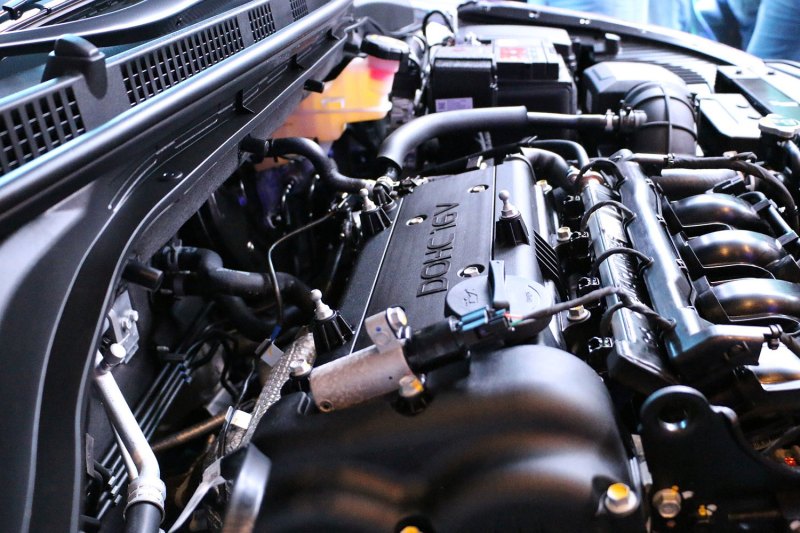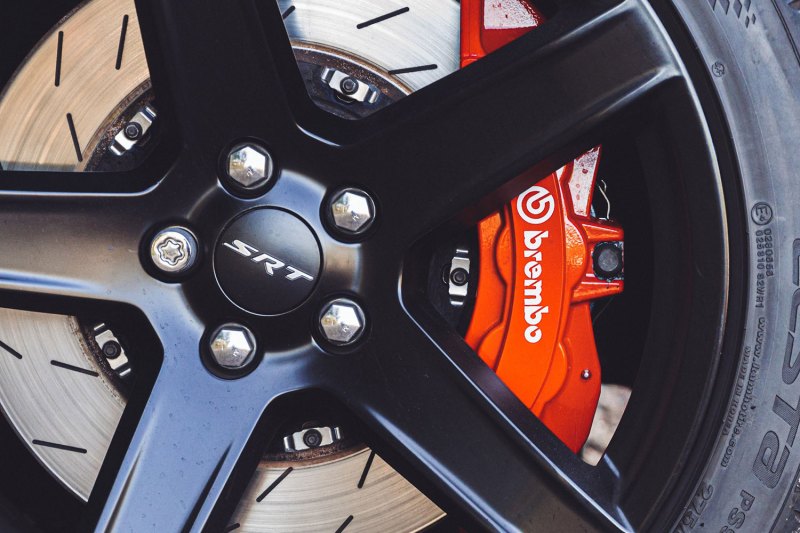Brake fluid is a type of hydraulic fluid used in most cars, motorcycles, and some trucks. Low brake fluid means there might be a leak or issue with your vehicle's braking system. Manufacturers typically recommend checking brake fluid every two years or 30,000 miles.
Fortunately, you don't need to be an expert mechanic to check your brake fluid. All you really need is two hands and around 10 minutes. Still, there are some details related to checking and testing your brake fluid that you'll want to know ahead of time so you don't get into trouble. In this article, we'll cover:
- How to check the brake fluid level
- How to check your car's brake fluid quality and pH balance
- When to schedule a brake fluid flush
- How to know the warning signs of low brake fluid
Read on as we explore the ins and outs of checking your vehicle's brake fluid.

How to check the brake fluid level
Checking your car's brake fluid level is almost as easy as refilling your windshield washer fluid. If you can open your vehicle’s hood and unscrew a cap, you’ve got all the skills you need.
A word of caution before getting started: Brake fluid can be highly toxic and corrosive. Avoid getting it in your eyes, and be sure to wash your hands thoroughly after checking the brake fluid level. Also, since it's caustic, avoid spilling any on your vehicle’s finish or engine components.
With that out of the way, let’s get started with checking your brake fluid!
Step 1: Open your vehicle’s hood and locate the master cylinder. It's a small, capped reservoir usually located near your vehicle’s firewall at the back of the engine compartment. The master cylinder is typically on the driver’s side of the engine bay in front of where your car's brake pedal is mounted. If you’re having trouble finding it, consult your owner's manual.
Step 2: Next, check the brake fluid level. Most newer vehicles from the mid-1980s and later have a translucent plastic reservoir. So, it’s easy to see the “full” line without removing the screw-off cap. Most older cars made before the early 1980s relied on a metal reservoir topped with a spring-loaded clamp. In this case, use a shop rag to wipe away any dirt from around the cap. Even a small amount of debris inside the master cylinder can damage your car’s delicate braking system. Use a screwdriver or good multi-tool to pry the spring-loaded clamp to one side and lift the cap. Look for the “full” line inside.
Step 3: If you discover low brake fluid, regardless of the age of your vehicle, add brake fluid. Some vehicles have a dual-chamber reservoir, in which case you should fill both to “full.”
Step 4: Wipe away any spilled or excess brake fluid immediately.
Step 5: Replace the reservoir cap.
Step 6: If your reservoir is empty or excessively low, this most likely indicates an issue with your brake system. Be sure to consult a mechanic immediately since your vehicle may be unsafe to drive.

How to check your car's brake fluid quality and pH balance
While you’re under the hood checking the master cylinder, it’s important to note not only the level but also the quality and pH balance of your car’s brake fluid.
Doing this is fairly straightforward with a readily available brake fluid test kit purchased from any automotive store or online retailer. With the master cylinder cap still off, follow these two additional steps.
Step 1: Put on plastic disposable gloves to check brake fluid. Remember brake fluid is toxic and corrosive.
Step 2: Open the brake fluid test kit and remove a single disposable strip.
Step 3: Dip the strip into your vehicle’s brake fluid.
Step 4: Shake off any excess.
Step 5: Wait 60 seconds.
Step 6: Compare the color on the strip to the guide/chart included with your brake fluid test kit. This will indicate when and if it’s time to change the brake fluid.

When to schedule a brake fluid flush
Like changing your oil and replacing your car’s air filters, when to schedule a complete brake fluid flush depends on your driving habits and your car’s year, make, and model. Most manufacturers recommend this service every 24 months or 30,000 miles, though this can vary. Consult your owner's manual to be sure. Also, know that this is just a guideline—the only way to be sure is to check your car’s brake fluid quality is with a proper testing kit or to visit a qualified mechanic.

Know the warning signs of low brake fluid
During regular operation, your vehicle should not lose brake fluid. Levels may drop slightly as brakes wear over time. But if the level has fallen significantly since your last fluid level check or full service, it’s time to see a mechanic. Minor issues are much easier and less costly to repair than dealing with total brake failure down the road.

Know your brake fluid type
Every manufacturer recommends a specific type of brake fluid for their vehicles. This is usually — though not always — DOT3 or DOT4 and noted on your vehicle’s brake fluid reservoir cap. Consult your owner's manual if you can’t find the recommended brake fluid type. Never mix and match brake fluid types or use a brake fluid that’s not designed for your vehicle’s brake system.
Low brake fluid can be an indication of an issue with your braking system. If you find your brake fluid is almost gone or extremely low. Fill it up and check with a mechanic.
Frequently Asked Questions
How do you know if my brake fluid is low?
Some of the common indicators that will let you know if your brake fluid is low are:
- The brake warning light on your dash is illuminated.
- A visual check under the hood suggests low levels.
- Your brake pedal isn’t as responsive as usual.
- Your car takes longer to stop than usual.
If any of these occur, you should either top off your brake fluid yourself or take it to a qualified auto mechanic.
Can you check brake fluid with the car running?
While you can technically check and pour in brake fluid while your car is running, the corrosive and toxic nature of the fluid makes this unadvisable. When spilled, brake fluid can cause damage to your car—or you.
Can I add brake fluid myself?
Checking and adding brake fluid to your car is a straightforward maintenance task that you can absolutely do yourself. Just follow these simple steps:
- Open the hood and find the master cylinder. It's a small, capped reservoir located near the back of the engine compartment, typically on the driver’s side of the engine bay in front of where your car's brake pedal is mounted.
- Remove the screw-off cap. Some vehicles have a dual-chamber reservoir, in which case you should fill both to “full.”
- Wipe away any spilled or excess brake fluid immediately.
- Replace the reservoir cap.
Note that if your reservoir is empty or excessively low, there is likely an issue with your brake system. In this case, consult a mechanic immediately.
Editors' Recommendations
- How fast do Formula 1 cars really go?
- How to clean foggy headlights without expensive equipment
- Simple garage organization tips for better car and motorcycle care
- Follow these car tire maintenance tips for long-lasting tires
- Car repairs guide: This is what those strange noises your car is making mean



